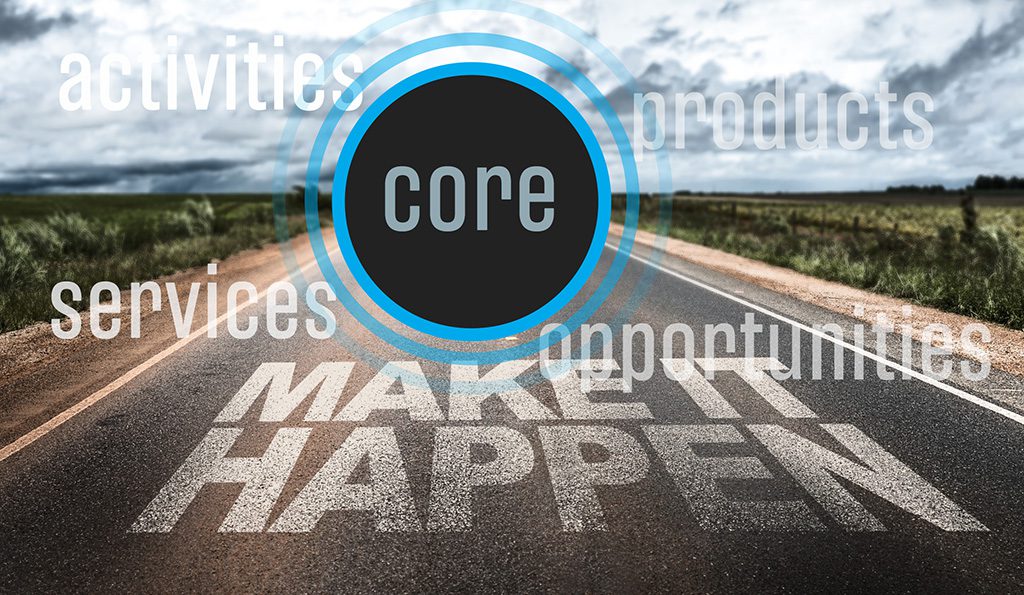
Jan 29, 2022 | Business Distinction, Leadership, Personal Distinction, Sales & Retail
Whoever said, “Imitation is the sincerest form of flattery,” got it all wrong. As I have often said (and been quoted for it), imitation is the sincerest form of theft.
Being like your competition was assumed to be a safe space for many. No longer. If all you are is a mirror image of your rivals, then you’re nothing more than a commodity.
- Being distinctive is the key to success.
You must be willing to think uniquely and develop ideas to stay ahead of the curve. It is why “Creativity” is the second of the Four Cornerstones of Distinction.
To help you get started, here are ten steps that will help you think differently:
Step #1: Be curious. The best innovators are always curiosity seekers. They’re constantly exploring new things and looking for ways to improve their products or services.
Step #2: Embrace change. Change can be scary, but it’s required for innovation. If you’re not open to change, you’ll never create anything new. You cannot create distinction by doing things the way they’ve always been done.
Step #3: Take risks. Innovation requires risk-taking, so don’t be afraid to experiment and try new things.
Step #4: Be open to feedback. Feedback is essential for innovation, so make sure you’re always listening to what others whose opinions you value have to say. This doesn’t mean the nay-sayers on social media should rule your thoughts. It means seeking and obtaining insights from those who sincerely want you to succeed.
Step #5: Think outside the box. (As much as I hate that old cliche — it is the truth here.) Don’t be afraid to come up with unconventional ideas. Think about it; someone really said in a meeting somewhere, “What if sharks got caught up in a big tornado?”
- That sounds strange, but it was probably just as wild when Marc Randolph (my colleague on the “in residence” faculty at High Point University) said to Reed Hastings, “What if you got DVDs in the mail instead of having to go to Blockbuster?” (You know how that turned out with Netflix, right?)
Step #6: Be persistent. Innovation doesn’t happen overnight, so don’t give up if your first few ideas don’t work out.
Step #7: Brainstorm often. For many, the most productive approach to develop innovative ideas is by brainstorming with others.
Step #8: Be patient. Innovation doesn’t happen overnight, so be prepared to work hard and put in the time necessary for success.
Step #9: Stay up-to-date. To stay ahead of the curve, you need to keep up with the latest trends and changes in your industry and others. By learning about what’s new in other industries, you may get insight into what you could do to stand out in yours.
Step #10: Get inspired. Inspiration can come from anywhere! Be certain that you’re constantly looking for new sources of inspiration. I’ve learned they are all around us – we just need to be on the lookout for them!
Remember, it’s not about copying what others are doing! It’s about creating fresh ideas that will help you stand out from the competition and create distinction!

Jan 22, 2022 | Business Distinction
It was a conversation that changed everything about how I viewed my own business – and, perhaps, how you should look at yours.
Several years ago, my wife had just passed, and my friends in the legendary country band Diamond Rio were concerned about me. Rather than let me remain alone in the house I had shared with my recently departed wife, the band invited me to go on their tour bus with them for a West Coast swing of concerts in California.
Late one night heading down I-5, one of the guys mentioned, “Our businesses are so much alike.” I offered my opinion that our respective endeavors were nothing alike!
I was a speaker giving business presentations, traveling alone (usually by air, not by bus) on the road for corporate audiences — they were a Grammy-award winning band, traveling together on a bus to play their music to fans who individually purchased tickets by the thousands.
Drawing a circle on a piece of paper, one of the band members said, “The core of everything for us is strong material — great songs.” He filled in the circle with the word “songs.” Then, drawing several lines radiating out from the ring, he put a word at the end of each line. One said, “gigs.” Others had aspects such as “merch” (for band merchandise like t-shirts and posters), “fan club memberships,” “PR,” “airplay,” and “sponsorships.”
“If we have a great song — and we’ve been blessed with many,” he said, “we get airplay on the radio, people want to come to hear us play at gigs, buy our albums, sign up for fan club memberships, corporations engage us for sponsorships and to appear on their commercials, and the world is more receptive to our efforts in public relations and the charitable work we do for Boys & Girls Clubs.”
“However,” he continued, “if we don’t have great songs, then NONE of this is possible. We recognized that while the most profit might come from our live concerts, that’s not the core of our business.”
“The core of our business,” he said, “is strong songs.”
He took another sheet of paper, drew another circle, and inside of that, he wrote, “content.”
“Here’s where our businesses are alike. The core of your business is in the insights and ideas you have.” Once again, he drew lines out from the circle on the page. Writing words at the ends of these new lines as he spoke, he stated, “That content is expressed through…” and he wrote, “speeches,” “books,” “social media,” “PR,” “consulting,” “coaching,” “training,” and “virtual.”
“Likely, your greatest current income is from the speeches you deliver — just like ours is from the concerts we perform. But the core of your business has to be your content. Everything must spring from that.”
It was the best consulting session I’ve ever received — and it changed how I viewed my business forever. I stopped looking at the product I spent most of my time selling — at that point, it was keynote presentations — and started focusing more on what had been revealed to me as the core of my business. And, thankfully, the results I received from that advice years ago have been nothing short of phenomenal.
Now, I ask you…what is the core of YOUR business or profession? And how can you ensure that your core is as strong as possible?
- This is NOT, to use a trendy term, your “why.” Your why is personal — it’s the reason you do what you do. Your core is the center point of your efforts. It is the place from which all your activity will spring forth.
You may be like I was and think the core is what you sell the most — however, in many cases, it’s not. This confusion about your core may contribute to lost sales, productivity, and lack of employee and customer retention.
Examples about Apple are overused, but it makes the point in this situation. If an Apple product becomes too complex to use intuitively, it deviates from what we know to be the essential element that has made them great. I would suggest Apple’s core (pardon the pun) is “insanely easy to use.” It’s not a phone or computer, watch or accessories.
Other companies may have more advanced technology — for example, Samsung’s latest folding phone is remarkable. However, we trust that an Apple device will combine what Steve Jobs called “insanely great” products with what we, who are customers, presume in ease of use.
Yet, if you work in tech at Apple, you might have a different “ease of use” standard than the average customer. You might want to push the envelope of technology without as much regard for a newbie’s learning curve.
For example, how many websites do you imagine designers create to impress other competing designers — rather than be easily functional for a prospective customer? Ever been on a site where you cannot figure out where to go to get the answer you’re seeking? The core of the website should be to inform, engage, and inspire customers to do business with us — not to impress them with the new technological bells and whistles of our code.
Here’s what I would suggest: take a blank sheet of paper and draw a circle in the middle. Think long and hard about the word or words you’ll place there.
Next, draw lines that extend from your core and consider all activities, products and services, and future opportunities that can derive from it.
- Notice, as well, that if something isn’t congruent with your core, it detracts from the clarity required to create distinction in your market.
This approach could be the beginning of the deep thinking required to move you and your business to what you want to achieve. It certainly was for me.

Dec 30, 2021 | Business Distinction, Current Event, Personal Distinction
This is the time of year when you’ll see a plethora of posts about how to launch your New Year positively. You’ll also see countless conversations on television news about your resolutions for the coming year.
Well… here’s one more — however, I’m going to suggest you need something OTHER than New Year’s resolutions. Don’t make the same mistake as last year and set resolutions — set goals! You need New Year’s Goals.
New Year’s goals are better than New Year’s resolutions.
What’s the difference between New Year resolutions and New Year goals? You probably don’t remember what last year’s resolutions were – they were just to do something more meaningful, like lose weight or get in shape. Resolutions kind of happen by themselves.
With a resolution, you say to yourself what you want — then you try to find the discipline to achieve it. The most cited example to prove this point is to look at how crowded fitness centers are in January versus how relatively empty they are in May.
Goals are different.
Goals must be stated to get done. You have to write down your New Year’s goals. This enables you to create specific action steps toward success.
So how do we set New Year’s goals? There are many ways, but I’m going to suggest a process that has worked for me in the past.
The first step is to take inventory of where you are right now – what’s working and what isn’t? This will help you set some goals around things you want to continue doing, as well as areas you’d like to improve.
The second step is to get clear about what you want – in other words, your goals. It doesn’t mean they have to be lofty or pie-in-the-sky; instead, it’s crucial that they inspire you and make you feel good just thinking about them. You don’t say you’re going on a vacation “somewhere.” You’re specific — you’re heading to Disney World or Vegas, for example. The same is valid with your goals. You have to be precise.
The third step is to create a timeline for your goals – when do you want to achieve them? Again, this doesn’t have to be rigid, but it’s helpful to stay on track. Remember — most people do not set unrealistic goals. Instead, they set unrealistic time frames.
The fourth step is to come up with an action plan – what are the specific steps you need to take to achieve your goal? Break it down into concrete, precise steps. This will help ensure you don’t leave out any steps in between.
The fifth step is to take action – the only way to achieve New Year’s goals and resolutions alike is by taking action! Thomas Edison said, “The value of an idea lies in the using of it.”
And finally…commit yourself to your New Year’s goals. Don’t be shy about letting people know what you’re working toward. The more accountable you are, the better chance you will achieve New Year’s goals.
New Year, new you? WRONG. New Year, New GOALS.
So distinctive New Year’s goal-setters – get to it! And have a very happy New Year, and I join you in looking forward to a happy, healthy 2022!
(If you’d like to get your New Year off to a terrific start — consider joining our Iconic Inner Circle! You get to try it out for a month for free…and there’s no obligation to continue. Take it for a test drive! Check it out at https://IconicInnerCircle.com.)

Dec 24, 2021 | Business Distinction, Customer Experience, Leadership, Personal Distinction
When you stop to think about it, the qualities embodied by the spirit of the holidays — a giving attitude, an appreciation expressed to others, and gratitude for your blessings — define how we should treat our customers and team members EVERY day throughout the year.
Giving Attitude
A “giving attitude” is best expressed as the perspective that puts the needs of others above your own. It’s the attitude of being willing to help, to give freely of yourself, and to think of others before yourself. We should bring this spirit to our relationships with both our customers and team members.
When we are open to giving more than we receive, it creates a feeling of joy and abundance. This is the attitude we want our team members and customers to experience. We should think of ways to give more, treat our customers differently, and make them feel special.
Instead of focusing on what we want or need, try shifting your perspective to giving freely to others without expecting anything in return.
Appreciation
Another aspect of the holiday spirit is appreciation. Naturally, we appreciate our customers. However, appreciation also means thankfulness for the team members who make our businesses run. They are the people who serve our customers, package and ship our products, produce and fulfill our orders, deliver customer service, and keep everything organized behind the scenes.
Expressing appreciation to our team members is the only way to show that we value them and their contributions. Keeping it to yourself does no good for anyone! A simple “thank you” can mean a lot, but it’s also important to show appreciation in ways that will be meaningful and memorable. Everyone likes to know that their efforts matter, so take the time to make your team feel valued.
Gratitude for Our Blessings
Finally, gratitude for our blessings is of utmost importance. If we want to grow in the future, we must appreciate how the lessons of the past – good and bad — have brought us to this point. We should also be grateful for our current situation, even if it is not ideal.
Our hearts open when we are grateful, and we become more compassionate. We see the good in life and in others, and this transforms how we interact with them.
Ideas Into Action
To put the spirit of holidays into action, consider these four questions:
- What does appreciation look like in my organization?
- How can I demonstrate appreciation for my team’s past efforts and current contributions?
- What can I do to uniquely express gratitude to my customers through unexpected acts of appreciation?
- How can I increase the joy and abundance in my organization to enhance our organizational culture during the coming year?
When we embody the spirit of the holidays every day in the coming year, we prepare for creating distinction, no matter the circumstances of the economy, pandemic, or unforeseen challenges.
- Apply these insights, and you’ve planted the right seeds for ICONIC achievement in 2022!
(And please keep watching here! We want to partner with you to enhance your professional and organizational growth. Our consulting/coaching/training business is limited to a few select clients each year. I would love to have a conversation with you about how we can work together to help you achieve the distinction you deserve in the coming year!)

Dec 19, 2021 | Business Distinction, Personal Distinction
While the holiday season is the busiest time of year for some, it is the time of our least productivity for others. Whichever describes you and your business, it’s important to note that we all have stress, and we all face burnout — especially in this volatile, unpredictable time of a pandemic.
Here are five ways you can rejuvenate yourself so that you arrive at the start of 2022 feeling refreshed, energized, and ready to take on the world:
- Take a break. Even if it’s just for an hour, step away from your work and do something you enjoy. Whether that means reading, taking a walk, or simply closing your eyes and resting, every professional needs to recharge the batteries every so often.
- Get organized. This goes hand-in-hand with taking a break. Having a plan and knowing what you need to do will help reduce stress levels and focus on the task at hand. Often our most significant stress — especially during the holiday season — can come from a lack of planning and organization.
- Delegate tasks. Especially if you’re a small business owner, it’s important to delegate tasks and responsibilities. Delegation will free up more time for you to do the jobs that only you can accomplish — for example, developing new product lines or reaching out to potential clients.
- Take care of yourself. You need food in your system to recharge energy levels. We often overeat during the holiday season, and the choices we make aren’t always the best for our bodies. (I am SO guilty in this regard! I am setting a goal to do better this year.) Try and make sure you consume nutritious food that will recharge your body, mind, and soul. You likely won’t do that for every meal this season — so take care when you can.
- Surround yourself with positive people. It’s often said that you are the average of the five people you spend your time with, so make sure those who influence you each day are optimistic and encouraging! We all have negative relatives or those we find irritating — and that we have to be around during this season. Don’t let them bring you down! Another cliche we need to remember is that what they do…and what they think of you…is not your business. As the Disney song says, “Let it go, let it go!” When you have the opportunity to choose the people that you will spend time with, go with the positive folks who charge your batteries rather than drain your spirits.
While sometimes it seems like there is not enough time in a day to recharge our batteries, we must take this vital step — otherwise, our businesses will suffer as well as our health.
Use these tips to help rejuvenate yourself so that you can be your best self in this holiday season as you prepare for a distinctive New Year!

Dec 13, 2021 | Business Distinction, ICONIC, Leadership, News & Info
Few management blunders have attracted as much attention as the one committed by the CEO of mortgage lender Better.com.
If you missed it, Vishal Garg fired more than 900 of his team members on a Zoom call by simply saying, “If you’re on this call, you are part of the unlucky group that is being laid off. Your employment here is terminated effective immediately.” (At least he didn’t add, “Happy Freaking Holidays!”)
Mr. Garg displayed a stunning lack of self-awareness and respect for his team. However, apparently this is nothing new for him. According to The New York Times, Garg previously told his colleagues they were “stealing from the company by working (out of their home offices for) only two hours a day — which…was contradicted by his team’s recent promotions and raises.” In addition, the NYT article stated that Mr. Garg’s rantings “had made it challenging for them (former employees) to apply for new jobs.”
Everyone needs to be rewarded and respected to excel — not just those in the office every day. Look at what happened when Vishal Garg sent his company into chaos if you don’t believe me. (The company’s Board of Directors have brought on a third-party firm to assess its leadership and culture, according to a copy of a memo obtained by The New York Times.)
There’s a lot to unpack here. One question we could consider is: what is the quality of management of a company that believes they can terminate a significant percentage of its employees — yet presumes they can deliver an equal quality of customer experience going forward?
This point also begs a larger question:
Why do you pay your employees?
- Are you paying them for the hours they work?
- Or are you paying them for the results they produce?
Too often, we get wrapped up in tracking time. We think that if someone is “only working two hours a day,” they must not be doing their job. But is that really fair or accurate?
Obviously, there are certain businesses and industries where hourly compensation is perhaps the only way to deliver remuneration. For example, employees must be at the checkout counter from 10 AM to 6 PM — and if they aren’t there, it creates problems throughout the business.
However, in my experience, most people who work from home are highly productive. In fact, many of the people I know who telecommute put in over 40 hours a week — but it is only reflected on their timesheets as a typical, 40-hour week.
The next time you’re tempted to track time, ask yourself this question: are my employees being paid for the results they produce?
Paying employees for results instead of hours is a better way to measure productivity and employee engagement. When you pay employees for the hours they work, you encourage them to stay focused on the clock. You are telling them that their time is more valuable than their output.
However, when you pay employees for their results, you reward them for their effort and creativity. This type of motivation leads to a more productive and engaged workforce.
Many years ago, I had involvement with a company that manufactured box trailers. The company’s general manager had a creative idea. He told the factory workers that current customer demands required eight perfectly built trailers every day. Then he said, “When you get the eight trailers perfectly built — go home! You’ve accomplished the results we require.”
Next, something unique happened. After the workers realized their compensation wouldn’t be reduced because they were working fewer hours, the trailers were produced much more rapidly. However, the other fascinating result was that the quality of the construction improved.
This meant the company sold more trailers — and increased the compensation of the team building them. It created a “win-win” for both the organization and the employees. Workers were paid for results — not for time.
When you pay employees for the results they produce, you are telling them that their effort matters. In addition, paying employees for results is a better way to evaluate your employee experience.
In order for your organization to excel, everyone needs to be rewarded and respected, as I stated as one of the “5 Factors of ICONIC Performance” in my recent book. This means respect is not just for those who are in the office every day and it is not merely based on how many hours they work.
Why do you pay your employees? My great friend, Randy Pennington, said it best with the title of his book: “Results Rule.” Customers don’t really care about how much time your employees put in. Customers care about the results delivered by your products and services.
When results drive compensation, your organization gets better results.






